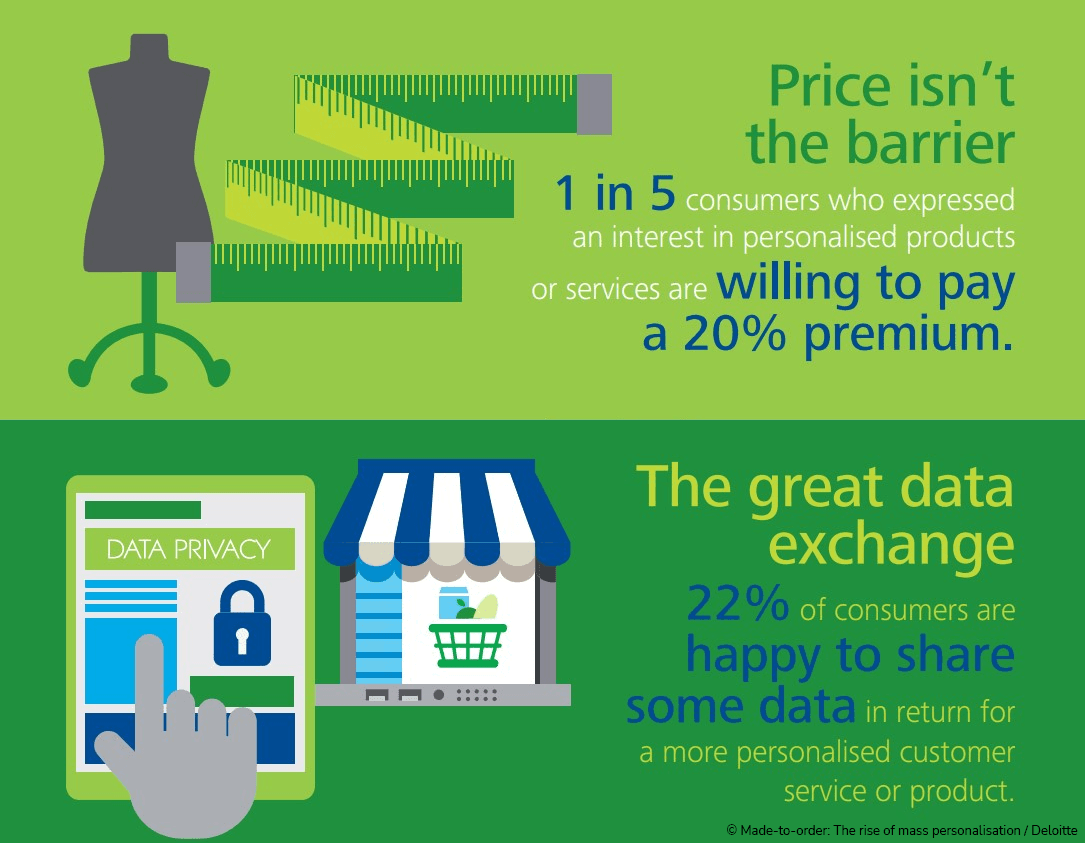Product Configurators
The Future of Online Shopping: Product Personalization through 3D Configurators

Manuel Wolf
21.2.2024- 4 Min.

Introduction
In a world where customers are increasingly looking for products that reflect their individuality and personal preferences, product personalization has become a key trend in e-commerce. This trend is amplified by advanced technologies like 3D configurators, which enable customers to tailor products to their desires. The 11th edition of the Deloitte Consumer Review, "Made-to-order: The rise of mass personalisation," highlights the growing importance of personalization in consumer behavior and how companies are responding. This article delves into the world of 3D product configurators and examines how they revolutionize the way we shop and experience products.
The Importance of Personalization in the Digital Age
According to the Deloitte report, an increasing number of consumers desire products and services specifically tailored to their needs. Over 50% of consumers express interest in customized products, and a significant majority are willing to pay more for such personalized items. This desire for individualization reflects a profound shift in consumer behavior, where the uniqueness of a product is often as important as its quality and functionality.
3D Configurators: Bridging Customer Desire and Product Reality
3D configurators are innovative online tools that allow customers to adjust and personalize products in a virtual environment. From color selection to functional features, customers can configure every facet of their desired product, whether it be a bicycle, motorcycle, furniture, or jewelry. This technology offers an interactive experience that goes far beyond traditional online shopping options, giving customers a real sense of involvement and creativity.
From Mass Production to Mass Personalization
Traditional mass production reaches its limits in a world that increasingly values individuality. Here, 3D configurators come into play: They enable efficient personalization on a large scale. Instead of manufacturing products in large quantities, hoping they meet the taste of a broad audience, 3D configurators allow companies to start production only when a specific customer requirement is present. This not only reduces overproduction and storage costs but also ensures that each product has a specific customer value.
The Role of 3D Configurators in E-Commerce
Platforms like Shopify, WooCommerce, and Magento have already facilitated the integration of 3D configurators, allowing small and medium-sized businesses access to this revolutionary technology. These tools are not only relevant for high-priced or luxury goods; they have the potential to transform a wide range of industries, from bicycles and motorcycles to furniture, jewelry, and fashion. A well-implemented 3D configurator can significantly enhance a company's online presence by increasing engagement rates and customer loyalty through an unparalleled shopping experience.
Challenges and Opportunities
Implementing 3D configurators presents companies with technical and logistical challenges, from integration into existing e-commerce systems to ensuring production processes are flexible enough to efficiently handle personalized orders. Yet, the opportunities opened by this technology are immense. Companies capable of overcoming these challenges position themselves as leaders in the era of personalization, improve their customer retention, and unlock new revenue streams through higher product margins and improved customer satisfaction.
Conclusion
The future of online shopping lies in personalization, and 3D configurators are the tool that makes this future possible. They not only offer customers the chance to design products according to their visions but also transform the way companies produce and sell. In a world increasingly defined by the search for uniqueness, 3D configurators provide a bridge between individual customer desires and manufacturers' technical capabilities. Companies that adopt this technology place themselves at the forefront of a movement that redefines the e-commerce experience and fosters a deeper connection between brands and consumers.
Related Articles

Product Configurators

Manuel Wolf
31.1.2024


Product Configurators

Manuel Wolf
12.2.2024
Contact
Call us or send us an email.